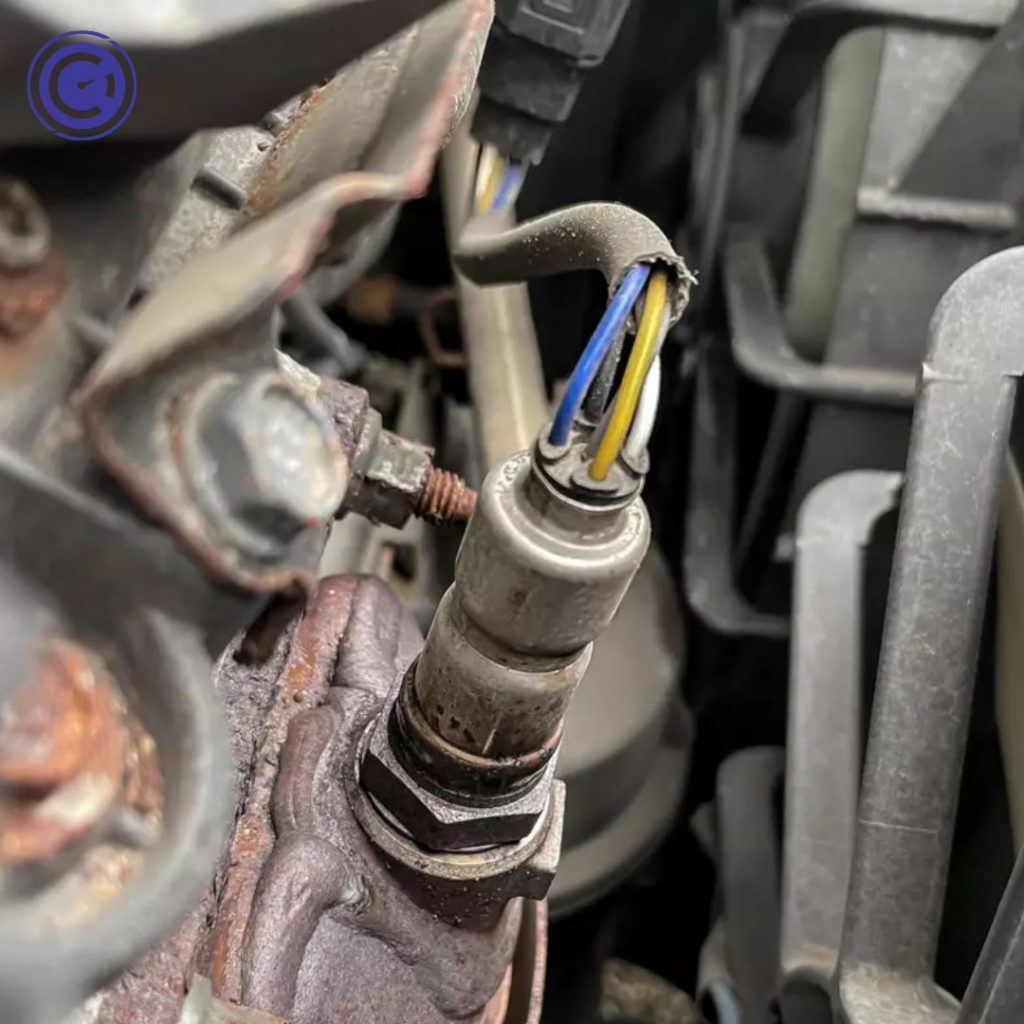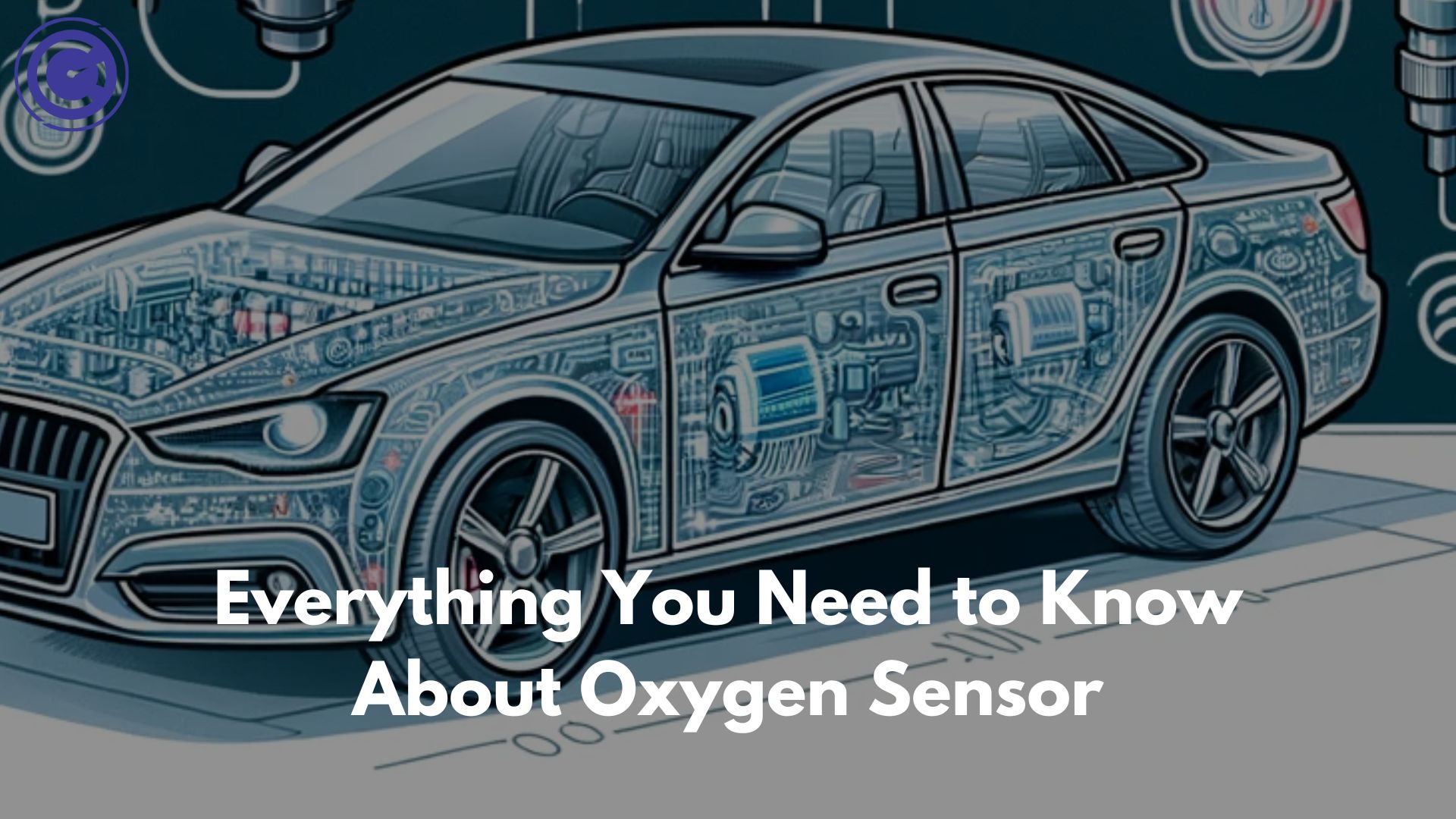Understanding the health of your vehicle’s components is crucial for every car owner. Among these, the oxygen sensor is a small, yet significant part of your car’s emissions system. In this detailed guide, we’ll explore the symptoms of a bad oxygen sensor, its causes, and the steps for diagnosis and repair.
Table of Contents
Introduction
The oxygen sensor is a key player in your car’s emission control system. It monitors the level of oxygen in the exhaust gases and communicates this information to the vehicle’s computer. This data is vital for the computer to regulate the fuel-air mixture, ensuring efficient engine operation and reduced emissions. A properly functioning oxygen sensor is essential for maintaining optimal engine performance and fuel efficiency.
Key Symptoms of a Bad Oxygen Sensor:

The oxygen sensor in your vehicle plays a critical role in managing the engine’s performance and emissions. It monitors the level of oxygen in the exhaust gases and communicates this data to the engine’s computer system. This feedback is crucial for adjusting the air-fuel mixture and maintaining efficient combustion. However, when an oxygen sensor starts to fail, it can lead to various engine problems. Here are the key symptoms of a bad oxygen sensor:
Illuminated Check Engine Light:

One of the first signs of a malfunctioning oxygen sensor is the illumination of the check engine light on your dashboard. Modern vehicles are equipped with onboard diagnostics that trigger this light when they detect irregularities in the engine’s operation, including issues with the oxygen sensor.
Poor Fuel Efficiency:

The oxygen sensor directly influences fuel management in your vehicle. A faulty sensor often sends incorrect information about the air-fuel mixture, causing the engine to consume more fuel than necessary. As a result, you may notice a decrease in your vehicle’s miles per gallon (MPG).
Rough Idle or Stalling:

If your car idles roughly, stalls, or experiences irregular RPMs while idling, it could be a sign of a bad oxygen sensor. When the sensor fails to provide accurate oxygen level readings, the engine may not receive the right air-fuel mix, leading to erratic engine behavior.
Loss of Power:

A failing oxygen sensor can result in noticeable power loss or sluggishness, especially during acceleration. The incorrect air-fuel mixture hampers efficient combustion, affecting the engine’s ability to deliver optimal power.
Unusual Exhaust Odor:
A rich fuel mixture (too much fuel, not enough air) can produce a strong, sulfur-like smell from the exhaust. This is often due to a bad oxygen sensor sending incorrect readings that skew the air-fuel balance towards excess fuel.
Increased Emissions:

A malfunctioning oxygen sensor can lead to higher emissions. This not only affects the environment but can also cause your vehicle to fail emissions tests. The incorrect air-fuel mixture results in incomplete combustion, leading to the emission of harmful gases.
Engine Misfires or Running Rough:
In some cases, a bad oxygen sensor can cause the engine to misfire or run rough. This happens because of the improper air-fuel mixture, which affects the combustion process in the engine cylinders.
In conclusion, a bad oxygen sensor can significantly impact the performance and efficiency of your vehicle. If you notice any of these symptoms, it’s important to have your vehicle checked by a professional mechanic. They can diagnose the issue accurately and replace the oxygen sensor if needed, ensuring your vehicle runs smoothly and efficiently. Remember, addressing the problem early can prevent more serious engine issues and save you money in the long run.
Potential Causes of a Bad Oxygen Sensor:
An oxygen sensor is a critical component in a vehicle’s emission system, playing a vital role in managing the engine’s efficiency and emissions. Over time, however, these sensors can fail due to various reasons. Understanding the potential causes of a bad oxygen sensor can help in early detection and prevent more significant engine issues. Here are some of the common causes:
Normal Wear and Tear:
Like all automotive components, oxygen sensors are subject to wear and tear over time. The average lifespan of an oxygen sensor is about 60,000 to 100,000 miles, although this can vary based on driving conditions and vehicle maintenance. Over time, the sensor’s ability to accurately measure oxygen levels in the exhaust gases diminishes, leading to performance issues.
Contamination:

The sensor can become contaminated from various sources, which can impair its functionality. Common contaminants include engine oil, coolant leaks, or excessive silicone from certain gasket sealers. These substances can coat the sensor’s tip and interfere with its ability to accurately detect oxygen levels.
Fuel Additives and Lead:

Using fuel additives or leaded gasoline in vehicles designed for unleaded fuel can damage the oxygen sensor. Certain additives may leave residues on the sensor, diminishing its sensitivity and responsiveness to changes in the exhaust gas composition.
Excessive Rich or Lean Fuel Mixture:
Consistently running on a rich (too much fuel) or lean (not enough fuel) mixture can strain the oxygen sensor. In the case of a rich mixture, carbon buildup can occur on the sensor, while a lean mixture might lead to overheating and damage.
Physical Damage:
The oxygen sensor, located in the exhaust system, is prone to physical damage from road debris, accidents, or during vehicle repairs. Such damage can affect the sensor’s structural integrity, leading to faulty readings or complete failure.
Electrical Issues:

Wiring problems related to the oxygen sensor, such as damaged wires, poor connections, or issues with the vehicle’s onboard computer system, can lead to malfunctioning of the sensor. Electrical faults can prevent the sensor from delivering accurate readings to the engine’s computer.
Poor Quality or Incorrect Replacement:
Installing a low-quality or incorrect replacement sensor can lead to premature failure. It’s crucial to use the right type of oxygen sensor specified for your vehicle model.
Environmental Factors:
Harsh driving conditions, such as exposure to road salts in cold climates or driving on dirt roads, can also accelerate the wear and tear of an oxygen sensor.
Regular vehicle maintenance and addressing issues like leaks or exhaust problems promptly can help in prolonging the life of an oxygen sensor. If you suspect your oxygen sensor is failing, it’s advisable to consult with a professional mechanic who can diagnose the issue accurately and recommend the appropriate solution. Ignoring the problem can lead to more significant engine issues, increased emissions, and reduced fuel efficiency.
Recognizing the Severity of Symptoms:
Identifying and understanding the severity of symptoms related to a bad oxygen sensor is crucial for maintaining your vehicle’s health and performance. Oxygen sensors play a critical role in regulating your vehicle’s fuel-air mixture, and their malfunction can lead to various issues. Here’s how you can recognize the severity of these symptoms and decide on the appropriate course of action:
Illuminated Check Engine Light:
- Severity: Moderate to High
- An illuminated check engine light is often the first sign of trouble, but its severity can vary. While it could indicate a minor issue, it’s also common for serious problems like a failing oxygen sensor. A diagnostic check is essential to determine the exact cause.
Poor Fuel Efficiency:
- Severity: Moderate
- A decrease in fuel efficiency could be a sign of a less efficient combustion process due to improper fuel-air mixture. While not immediately catastrophic, it should be addressed promptly to avoid increased fuel costs and potential engine strain.
Rough Idle or Stalling:
- Severity: High
- Rough idling or stalling, especially in traffic, can pose a safety risk. This symptom indicates a more serious issue with the oxygen sensor affecting the engine’s operation. Immediate professional assessment is advised.
Loss of Power:
- Severity: High
- Experiencing a noticeable loss of power, particularly during acceleration, is a serious concern. It suggests that the engine isn’t receiving the correct fuel-air mixture for optimal performance, which can lead to further engine damage if not addressed.
Unusual Exhaust Odor:
- Severity: Moderate to High
- A strong, sulfur-like smell from the exhaust can indicate an overly rich fuel mixture. This condition not only affects performance but can also result in higher emissions and damage to other components like the catalytic converter.
Increased Emissions:
- Severity: High
- Elevated emission levels are a significant concern, especially if they lead to failing emissions tests. This symptom suggests a more profound impact on the vehicle’s environmental footprint and, potentially, its legal roadworthiness.
In summary, while some symptoms like a slight decrease in fuel efficiency may not demand immediate attention, other signs like loss of power or stalling are critical and require prompt professional intervention. It’s important to remember that the longer you wait to address issues related to a bad oxygen sensor, the more you risk causing further damage to your vehicle. Regular maintenance and early detection of issues can go a long way in preserving the health and longevity of your car.
Diagnosing a Bad Oxygen Sensor:
Diagnosing a bad oxygen sensor requires a systematic approach to confirm that the sensor is the root cause of your vehicle’s issues. Oxygen sensors are vital for maintaining the balance of the fuel-air mixture in your engine, and their failure can lead to a range of problems. Here’s a step-by-step guide to diagnosing a faulty oxygen sensor:
Reading the Check Engine Light Codes:
- Most modern vehicles will trigger the check engine light if there’s an issue with the oxygen sensor. Use an OBD-II (On-Board Diagnostics) scanner like GaragePro OBD2 Scanner to read the diagnostic trouble codes (DTCs) stored in the vehicle’s computer system. Codes related to the oxygen sensor often start with ‘P0130‘ or ‘P0150‘ series.
Visual Inspection of the Oxygen Sensor:
- Locate the oxygen sensor in your vehicle – it’s typically found in the exhaust manifold or close to the catalytic converter. Visually inspect the sensor for signs of physical damage, excessive soot, or contamination by oil or coolant. Also, check the wiring and connectors for damage or corrosion.
Testing the Sensor’s Voltage:
- Oxygen sensors operate by generating a voltage when they detect oxygen in the exhaust. Using a multimeter, you can measure the sensor’s voltage output to see if it’s within the normal range. A properly functioning oxygen sensor typically fluctuates between 0.1 and 0.9 volts.
Checking Sensor Response Time:
- An oxygen sensor should respond quickly to changes in the air-fuel mixture. You can test this by revving the engine and watching the voltage reading on your multimeter. A sluggish or unresponsive sensor may indicate that it’s failing.
Examine the Exhaust Gas Analysis:
- For a more comprehensive diagnosis, a professional mechanic might perform an exhaust gas analysis. This test measures the concentrations of various gases in the exhaust, providing insight into the combustion process and the oxygen sensor’s accuracy.
Comparing Sensor Readings:
- If your vehicle has more than one oxygen sensor, comparing the readings from each sensor can be helpful. Differences in the readings might indicate which sensor is malfunctioning.
Considering Related Components:
- Sometimes, issues attributed to the oxygen sensor are actually caused by other components, such as the catalytic converter, fuel injectors, or air mass meter. Consider these parts in your diagnosis to ensure accurate identification of the problem.
If you’re not comfortable performing these diagnostic steps, or if the diagnosis is inconclusive, it’s always best to consult with a professional mechanic. They have the expertise and equipment to accurately diagnose the issue, ensuring the right repairs are made. Remember, accurate diagnosis is key to effective repairs and maintaining your vehicle’s performance and efficiency. The cost of replacing an oxygen sensor varies by vehicle make and model. Additional expenses may include diagnostic fees and labor charges.
Preventive Measures to Extend Oxygen Sensor Life:
The oxygen sensor is a critical component of your vehicle’s emission control system, and ensuring its longevity can save you from costly repairs and maintain your car’s performance. Here are some preventive measures you can take to extend the life of your oxygen sensor:
Regular Vehicle Maintenance:

- Stick to your vehicle’s recommended maintenance schedule. Regular maintenance, including oil changes, air filter replacements, and fuel system cleaning, can prevent contaminants like oil or dirt from harming the oxygen sensor.
Use High-Quality Fuel:
- Opt for good quality, clean fuel. Low-quality fuel can have higher levels of contaminants and additives that may lead to premature sensor failure. Additionally, avoid using leaded gasoline in vehicles designed for unleaded fuel, as lead can damage the oxygen sensor.
Keep the Engine in Good Condition:
- Ensure your engine is running efficiently. Problems like misfires, poor combustion, and leaking fluids can adversely affect the oxygen sensor. Address engine performance issues promptly to reduce the risk of sensor damage.
Avoid Unnecessary Additives:
- Be cautious with fuel additives. Some additives may leave deposits on the oxygen sensor, reducing its effectiveness and lifespan. Unless specifically recommended by your vehicle manufacturer, it’s best to avoid them.
Check and Replace Air Filters Regularly:
- A dirty air filter can lead to an incorrect air-fuel mixture, causing the oxygen sensor to work harder and wear out sooner. Regularly replacing the air filter can prevent this.
Monitor and Fix Exhaust Leaks:
- Exhaust leaks before the sensor can cause incorrect readings and extra strain on the sensor. If you notice an exhaust leak, get it repaired as soon as possible.
Be Cautious with Engine Cleaning Chemicals:
- When cleaning the engine or performing any under-hood maintenance, be careful with chemicals and solvents. Avoid exposing the oxygen sensor to any harsh substances.
Handle Sensor Replacements with Care:
- If you’re replacing the oxygen sensor yourself, handle it with care. Improper installation can damage the sensor. Ensure it’s the correct type for your vehicle and is installed securely.
Warm Up the Engine Properly:

- Give your engine time to warm up, especially in cold weather. This helps the oxygen sensor reach its operating temperature and function effectively.
By following these preventive measures, you can extend the life of your oxygen sensor, maintain your vehicle’s fuel efficiency, and reduce emissions. Regular attention and care of your vehicle’s engine and exhaust system are key to ensuring the health of the oxygen sensor and overall vehicle performance.
Long-Term Impacts of Ignoring a Bad Oxygen Sensor:
Ignoring a bad oxygen sensor in a vehicle can have several long-term impacts, impacting both the vehicle’s performance and the environment. Here’s a list of key consequences:
- Reduced Fuel Efficiency: A faulty oxygen sensor can send incorrect data to the car’s computer, resulting in a richer or leaner fuel mixture than necessary. This can significantly decrease fuel efficiency, leading to higher fuel consumption and increased costs over time.
- Engine Performance Issues: An incorrect air-fuel mixture, caused by a bad oxygen sensor, can lead to poor engine performance. This might manifest as rough idling, stalling, difficulty in starting the engine, or a noticeable drop in power and acceleration.
- Increased Emissions: One of the primary roles of the oxygen sensor is to help maintain the optimal air-fuel ratio for complete combustion. A malfunctioning sensor can lead to incomplete combustion, increasing harmful emissions like carbon monoxide, hydrocarbons, and nitrogen oxides.
- Damage to the Catalytic Converter: Over time, a bad oxygen sensor can contribute to the premature failure of the catalytic converter. The improper air-fuel mixture can lead to excessive fuel being burned in the catalytic converter, causing it to overheat and break down.
- Potential for Failing Emissions Tests: Vehicles with faulty oxygen sensors are likely to fail emissions tests due to high levels of pollutants in the exhaust. This can lead to legal and financial implications, especially in regions with strict emissions standards.
- Increased Maintenance and Repair Costs: Ignoring a bad oxygen sensor can lead to more significant and expensive repairs down the line. What starts as a simple sensor replacement can escalate into needing a new catalytic converter or other engine repairs.
- Impact on Overall Vehicle Health: Continuously operating a vehicle with a faulty oxygen sensor can strain the engine and other components, potentially shortening the vehicle’s lifespan and leading to more frequent and costly repairs.
- Environmental Impact: Increased emissions not only fail regulatory standards but also contribute to environmental pollution, impacting air quality and contributing to broader ecological issues.
It’s important to address issues with an oxygen sensor promptly to avoid these long-term impacts. Regular vehicle maintenance and early detection of problems can help prevent these consequences.
Conclusion
In conclusion, recognizing the symptoms of a bad oxygen sensor is crucial for maintaining the health and efficiency of your vehicle. Ignoring these signs – such as decreased fuel efficiency, rough idling, increased emissions, and the illumination of the check engine light – can lead to more severe problems, including damage to the catalytic converter and poor engine performance. Timely addressing and replacing a faulty oxygen sensor not only saves you from expensive repairs but also ensures that your vehicle runs at optimal efficiency and is environmentally friendly. Regular vehicle maintenance and early detection of such issues are key to prolonging the life of your car and ensuring a smooth, efficient driving experience. Remember, your vehicle’s oxygen sensor may be a small component, but its impact on your car’s overall health is significant.


